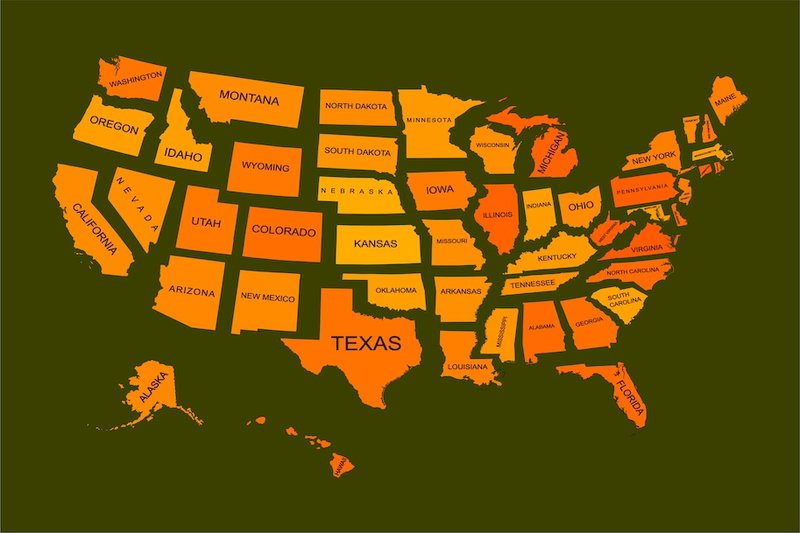With CCDF Rule in Limbo, Next Steps for States Are Uncertain
The rule sparked many of the recent positive changes in child care policy in states across the country.
Blog Post

Shutterstock
Oct. 23, 2025
On March 1, 2024, the U.S. Department of Health and Human Services issued a final rule regarding regulatory changes to the Child Care and Development Fund (CCDF), the main federal funding source for helping about 1.5 million children in families with low incomes afford child care. The rule, which followed an April 2023 executive order from President Biden focused on increasing access to high-quality care, was designed to improve the financial stability of child care providers, make it easier for families to sign up for child care subsidies, and lower costs for families.
To accomplish these goals, the rule required states to make several changes, including:
- Capping family copayments at seven percent of household income for subsidy-eligible families;
- Implementing payment practices to improve provider financial stability, including paying prospectively and reimbursing providers based on enrollment instead of attendance;
- Providing some services through grants and contracts to increase the supply and quality of child care for children in underserved areas, infants and toddlers, and children with disabilities; and
- Implementing subsidy eligibility policies and procedures, such as online subsidy applications, that minimize disruptions and lessen the burden of administrative requirements for families.
Additionally, the rule recommends, but does not require, other changes, including waiving copays for certain populations and considering children presumptively eligible for subsidies prior to full documentation and certification. The final rule technically took effect on April 30, 2024, but states were allowed to request temporary waivers of up to two years to ensure they had enough time to comply with the rule’s requirements.
New America’s New Practice Lab recently took a close look at how states are transitioning toward paying providers prospectively and based on enrollment rather than attendance, one of the rule’s main requirements. A systematic review of the 2025-2027 CCDF State Plans, appendices, waivers, and other publicly available documentation revealed that 24 states are already paying providers based on enrollment. Additionally, six states were paying providers prospectively at the time of plan submission and two others have since implemented this change. These changes, if kept in place, have the potential to provide much-needed financial stability and predictability to providers, a major goal of the rule.
Several states have recently made legislative changes to comply with other parts of the rule. For example, Alaska lawmakers enacted legislation to limit family copayments to no more than seven percent of family monthly income, one of the rule’s requirements designed to reduce costs for families. “Our lowest-earning families are not fully utilizing the system because they can’t afford it. It’s more the lower-middle income families who use it,” says Stephanie Berglund, chief executive officer of thread, the state’s Child Care Resource & Referral agency. “I’m thankful that one of the child care bills that passed includes the seven percent cap on co-pays. There was a question about whether that should be taken out of the bill because it’s going to be in the federal rule anyway,” said Berglund. According to their CCDF State Plan, Alaska also plans to launch prospective payments to providers by the end of February 2026, but that timeline (and the timelines submitted by many other states) is now in question due to recent news from the administration (see below).
Lawmakers in Maine recently passed legislation designed to increase child care supply for infants and toddlers, children with disabilities, and children living in underserved geographic regions through the use of direct contracts with providers. A growing number of states are using grants and contracts to address provider disincentives for participating in the subsidy system, such as low reimbursement rates and instability in subsidy receipt. This arrangement allows the subsidy program to pay providers directly, either before or after services are provided. “This is a really important policy piece to make change, to make a better system, and also to test some things out in terms of making sure that we’re really serving kids with disabilities, homeless children, and rural parts of Maine where there are places with virtually no child care available at all. So these contracts can really be a tool to help with access,” says Rita Furlow, senior policy analyst at Maine Children’s Alliance.
The 2024 final rule granted states a waiver to allow them to reach full compliance with the rule’s requirements by August 1, 2026, but the Trump administration has recently been sending signals that they intend to do away with the rule entirely. In late August, CCDF administrators were informed that they can request additional rule waivers through August 1, 2028. Additionally, the administration plans to release a Notice of Proposed Rulemaking (NPRM) later this year, the first step in either revising the rule or eliminating it altogether. This leaves states in an uncertain position, as many have already made significant changes as indicated in their 2025-2027 CCDF State Plans to comply with the rule.
Changes such as the ones recently made by Alaska and Maine are often the result of years of work and significant financial expenditures. “Our state invested a huge amount of money in changing their entire computer system to make all of this work and they’re not going to go backwards… even if there is an opportunity at the federal level to roll things back, I don't see Maine really doing that,” says Furlow.
What’s clear is that the final rule sparked many of the recent positive changes in child care policy in states across the country. Even if the current administration may eliminate the rule, states can continue to sustain or build on these recent policy changes. What’s now left unclear is how other states will respond in the coming years if the rule is, indeed, repealed.